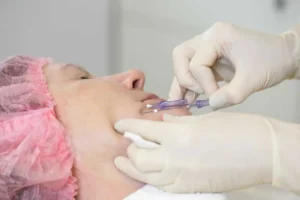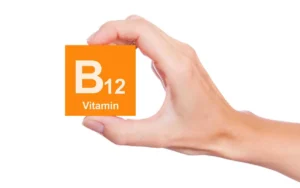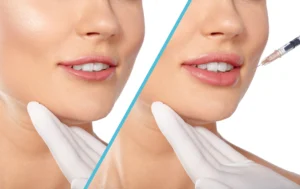As we age, our skin naturally loses volume and elasticity, leading to wrinkles, fine lines, and sagging. Dermal fillers by Magnifique Med Spa have emerged as a popular non-surgical solution to combat these signs of aging, offering a way to restore volume, smooth out wrinkles, and enhance facial contours. With a variety of dermal fillers available on the market, it’s essential to understand the different types and their unique properties to determine which one is best suited for your specific needs and desired outcomes.
Understanding Dermal Fillers
Dermal fillers are injectable substances designed to add volume, enhance contours, and improve the overall appearance of the skin. They work by filling in wrinkles, plumping up areas that have lost volume, and stimulating collagen production in some cases. The effects of dermal fillers are temporary, typically lasting anywhere from six months to two years, depending on the type of filler used and individual factors.
Types of Dermal Fillers
Hyaluronic Acid (HA) Fillers- Hyaluronic acid is a naturally occurring substance in the body that helps keep skin hydrated and voluminous. HA fillers are the most popular type of dermal filler due to their versatility, natural-looking results, and reversibility.
Common brands include:
- Juvéderm
- Restylane
- Belotero
Best for:
- Lip enhancement
- Smoothing fine lines and wrinkles
- Adding volume to cheeks and under-eye areas
- Improving facial contours
Duration: 6-18 months, depending on the specific product and area treated
Calcium Hydroxylapatite (CaHA) Fillers- Calcium hydroxylapatite is a mineral-like compound found naturally in human bones. When used in fillers, the CaHA microspheres are suspended in a smooth gel carrier.
Common brand:
- Radiesse
Best for:
- Moderate to severe facial wrinkles and folds
- Restoring volume in the cheeks and hands
- Enhancing jawline definition
Duration: 12-18 months
Polylactic Acid (PLLA) Fillers- PLLA is a biodegradable synthetic substance that stimulates collagen production. Unlike other fillers that provide immediate volume, PLLA works gradually over time to improve skin quality and texture.
Common brand:
- Sculptra
Best for:
- Treating deep facial wrinkles
- Restoring facial volume lost due to aging or illness
- Improving overall skin quality and texture
Duration: Up to 2 years, with results developing over several months
Polymethylmethacrylate (PMMA) Fillers- PMMA fillers consist of tiny plastic beads suspended in collagen. They provide long-lasting support to the skin and continue to stimulate natural collagen production.
Common brand:
- Bellafill
Best for:
- Treating deep wrinkles and folds
- Filling in acne scars
- Providing long-term facial volume enhancement
Duration: 5 years or more
Autologous Fat Transfer- While not technically a dermal filler product, autologous fat transfer (also known as fat grafting) is a procedure in which fat is harvested from one area of the body and injected into areas needing volume enhancement.
Best for:
- Large-volume facial rejuvenation
- Enhancing facial contours
- Improving skin texture and quality
Duration: Results can be long-lasting, but the body may reabsorb some of the transferred fat
Choosing the Right Dermal Filler for You
Selecting the most appropriate dermal filler depends on various factors, including your specific concerns, desired outcomes, and individual characteristics. Here are some key considerations to help guide your decision:
- Treatment Area- Different fillers are better suited for specific areas of the face:
- Lips- HA fillers like Juvéderm and Restylane are ideal for lip enhancement due to their soft, natural feel.
- Cheeks- CaHA fillers like Radiesse or thicker HA fillers can provide the structure needed for cheek augmentation.
- Under-eyes- Thin, flexible HA fillers are typically used in the delicate under-eye area.
- Nasolabial folds- Various fillers can be effective, depending on the depth of the folds.
Desired Longevity
Consider how long you want the results to last:
Shorter-acting HA fillers might be preferable for first-time filler users or those wanting to try out a new look.
If you’re looking for longer-lasting results, CaHA, PLLA, or PMMA fillers could be more suitable.
Skin Thickness and Texture
The thickness of your skin can influence filler choice:
- Thinner skin may benefit from softer, more flexible fillers.
- Thicker skin might require more robust fillers for noticeable results.
Age and Extent of Volume Loss- Younger patients with minimal volume loss might prefer softer, more subtle fillers. In contrast, older individuals with significant volume loss may benefit from more substantial fillers or a combination approach.
Budget—Different fillers have various price points, and the frequency of treatments required can affect the overall cost. Discuss your budget with your provider to find a suitable option.
Potential for Allergic Reactions- While rare, some individuals may be allergic to certain filler ingredients. HA fillers are generally considered the safest option for those with sensitive skin or allergies.
Reversibility- If you’re new to fillers or concerned about the potential results, consider starting with HA fillers. If you’re unhappy with the outcome, you can dissolve them using an enzyme called hyaluronidase.
The Importance of Choosing a Qualified Provider
Regardless of the type of filler you choose, the skill and experience of your provider play a crucial role in achieving optimal results. A qualified practitioner will:
- Conduct a thorough consultation to understand your goals and assess your facial anatomy
- Recommend the most appropriate filler or combination of fillers for your needs
- Have extensive knowledge of facial anatomy to ensure safe and effective treatment
- Use proper injection techniques to minimize discomfort and achieve natural-looking results
- Provide comprehensive aftercare instructions and follow-up
Potential Risks and Side Effects
While Dermal fillers are generally safe when administered by a qualified professional, it’s essential to be aware of potential risks and side effects, which may include:
- Bruising, swelling, and redness at the injection site
- Asymmetry or lumps
- Infection (rare)
- Allergic reactions (rare)
- Vascular occlusion (extremely rare but serious)
Discuss these potential risks with your provider and follow all pre- and post-treatment instructions carefully to minimize complications.
Experience the Best of Dermal Fillers at Magnifique Med Spa Today!
Dermal fillers offer a versatile, non-surgical approach to facial rejuvenation and enhancement. With a range of options available, from hyaluronic acid fillers to more long-lasting alternatives like PMMA, there’s likely a filler that’s well-suited to your specific needs and goals.
The key to achieving the best results with dermal fillers lies in choosing the right product for your unique situation and working with a skilled, experienced provider. By considering factors such as the treatment area, desired longevity, skin characteristics, and your personal preferences, you can make an informed decision about which dermal filler is suitable for you.
The world of aesthetic treatments is ever-evolving, with new products and techniques emerging regularly; stay informed, consult with reputable providers, and don’t be afraid to ask questions or express your concerns. With the right approach, dermal fillers can be an excellent tool in your anti-aging arsenal, helping you maintain a youthful, refreshed appearance for years to come.






